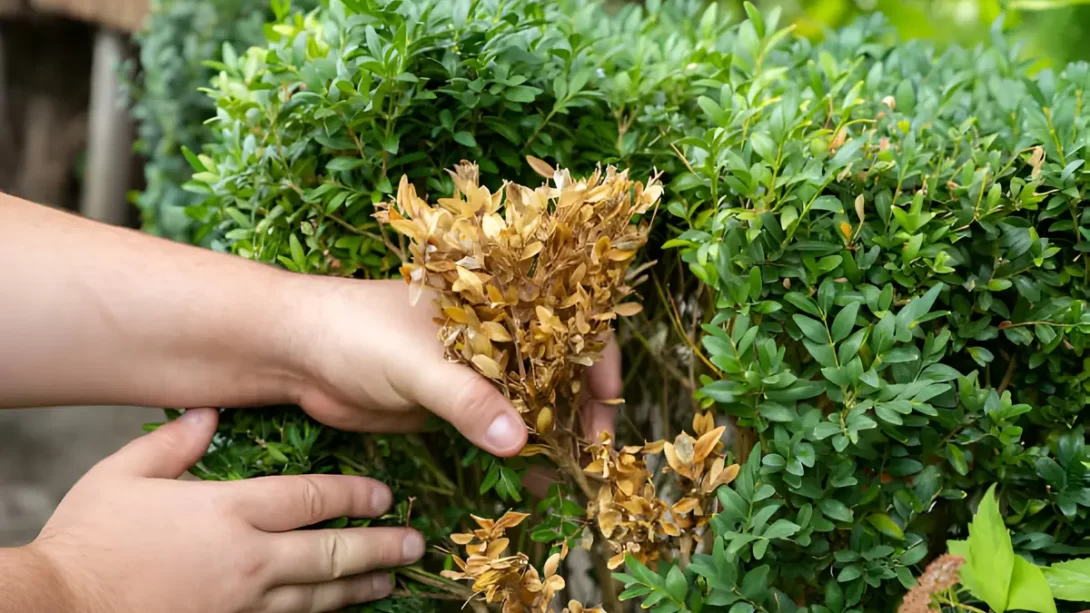The Boxwood (Buxus spp.), a mainstay in many gardens, is prized for its dense, evergreen foliage and versatility in landscaping. Despite its hardiness, boxwoods can sometimes succumb to environmental stressors, pests, or diseases. Recognizing the signs of decline early and taking prompt action is crucial for the revival of a dying boxwood. This article will guide you through the steps to diagnose and treat common issues, helping restore your boxwood to its former vitality.
Identifying the Signs of a Dying Boxwood
Determining the health of your boxwood begins with keen observation. Common distress signals include leaves turning yellow or brown, dry or brittle branches, and thinning foliage. It’s important to distinguish these symptoms from natural seasonal changes, such as some leaf yellowing in winter. When these signs are more pronounced or occur out of season, they indicate a deeper issue. Acting quickly upon noticing these symptoms increases the chances of successfully reviving the shrub.
Assessing the Causes
The decline in boxwoods can be attributed to a variety of factors, each requiring a different approach for remedy:
- Soil Conditions: Poor soil quality can lead to nutrient deficiencies or root problems. Check for compacted, overly sandy, or clay-heavy soil.
- Water Stress: Both underwatering and overwatering pose risks. Look for signs of waterlogged soil or, conversely, dry, cracking soil.
- Pests and Diseases: Common culprits include boxwood blight, root rot, and pests like boxwood leafminer. Inspect for unusual leaf spots, decayed roots, or signs of insect infestation.
- Environmental Stress: Extremes in temperature, wind, or sun exposure can affect boxwoods. Consider recent weather patterns and the shrub’s location in your garden.
Understanding the root cause is essential for effective treatment and recovery of the shrub.
Addressing Soil and Water Issues
If soil or water issues are to blame, adjustments in your care routine are necessary:
- Improving Soil Quality: Amend poor soil with organic matter such as compost to improve texture and nutrient content. This enhances root health and overall plant vigor.
- Watering Practices: Implement a deep watering regimen, which encourages roots to grow deeper and stronger. Water deeply but infrequently, allowing the soil to dry slightly between waterings.
- Enhancing Drainage: In areas with heavy soil or poor drainage, consider elevating the plant or improving soil composition to prevent waterlogging.
These foundational changes can significantly improve the health and resilience of your boxwood.
Managing Pests and Diseases
Pests and diseases can severely impact the health of boxwoods. Identifying and treating these issues promptly is crucial for revival:
- Boxwood Blight: Look for dark leaf spots and black streaks on stems. Fungicides can help, but severely affected plants may need removal to prevent spread.
- Root Rot: Caused by excessive moisture, root rot leads to soft, black roots. Improve drainage and consider using fungicides for early stages of infection.
- Boxwood Leafminer: These pests create blisters on leaves. Control includes pruning affected foliage and applying appropriate insecticides.
In all cases, healthy cultural practices are the best defense against pests and diseases. Regularly inspect your boxwoods and take action at the first sign of trouble.
Pruning and Care
Pruning plays a vital role in the health of a boxwood, particularly one that is struggling:
- Pruning Dead or Diseased Branches: Remove any dead or diseased wood to prevent further decay and promote new growth. Use clean, sharp pruning shears to make clean cuts.
- Timing: The best time for heavy pruning is late winter or early spring, before new growth starts. Light pruning can be done throughout the growing season to shape the plant.
- Regular Maintenance: Consistent pruning helps maintain airflow and light penetration, crucial for the health of the shrub. Remove any inward-growing branches and thin out dense areas.
Proper pruning not only improves the appearance of your boxwood but also its overall health and ability to withstand stressors.
Revitalizing Through Fertilization
Fertilization can give a much-needed boost to a struggling boxwood:
- Choosing a Fertilizer: A balanced, slow-release fertilizer is ideal. Look for formulas designed for boxwoods or evergreens.
- Application: Apply fertilizer in early spring as new growth appears. Follow the manufacturer’s instructions to avoid over-fertilization, which can damage the plant.
- Monitoring: Observe how your boxwood responds to fertilization. Healthy new growth is a good sign, but be wary of rapid, weak growth, which can make the plant more susceptible to damage.
Fertilization should be part of a holistic care plan, including proper watering, soil management, and pest control. This approach maximizes the chances of your boxwood’s recovery.
Monitoring and Long-Term Care
After addressing the immediate concerns, ongoing observation and care are key to your boxwood’s recovery and future health:
- Regular Monitoring: Keep a close eye on your boxwood, especially after treatment. Watch for new growth and any return of previous symptoms.
- Seasonal Adjustments: Adjust watering and care with the changing seasons. Boxwoods may need more moisture in dry summers and protection from harsh winter winds.
- Soil Testing: Periodically test the soil to ensure it maintains the right nutrient balance and pH level suitable for boxwoods.
Consistent monitoring and adjusting your care approach as needed will help your boxwood remain healthy and vibrant.
Recognizing a Thriving Plant
Success in reviving your boxwood can be measured by several positive signs:
- New Growth: The appearance of new, healthy leaves and shoots is a clear indicator of recovery.
- Improved Foliage Color: Leaves should return to a rich, vibrant green, indicative of a healthy boxwood.
- Resilience to Stressors: A revived boxwood will better withstand environmental changes, pests, and diseases.
These signs show that your efforts have been effective and that your boxwood is on the path to full health.
Conclusion
Reviving a dying boxwood requires patience, proper diagnosis, and a targeted care approach. By identifying the signs of distress, addressing the underlying causes, and providing ongoing care, you can often restore the health of your boxwood. Remember, prevention is key. Regular monitoring, proper watering, soil care, and pest management go a long way in keeping your boxwoods healthy. With these steps, your boxwood can continue to be a beautiful and resilient part of your garden for years to come.



